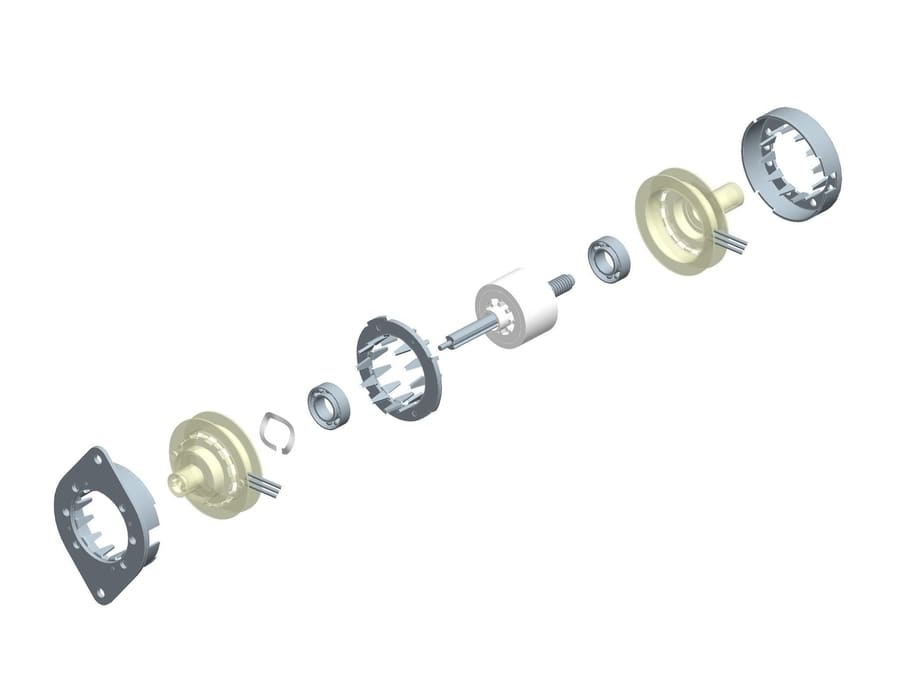
#Industry News
How to Select a Stepper Linear Actuator
How to Select a Stepper Linear Actuator
Stepper linear actuators, or digital linear actuators, are devices that directly convert rotary motion into linear motion by using nut and leadscrew mechanisms. Unlike typical miniature motor technologies, linear motion is achieved in the motor itself, which eliminates designing separate transmission mechanisms; this not only decreases the footprint of the motor, but also decreases the cost and effort of the inclusion of additional mechanical components like gears and belts.
Here are seven key factors to consider when selecting a stepper linear actuator for your application:
Size. Selecting the size of the actuator can be a valuable starting point of linear actuator selection. By determining the amount of space available in your system, you can then decide the envelope size of the actuator. Keep in mind that sizing involves considering critical dimensions like diameter, length of the actuator, dimensions of the mounting plate, etc.
Actuator Type. There are two types of linear actuators available:
Non-Captive Stepper Linear Actuator. This configuration has a single leadscrew which provides linear motion, but as there is no constraint for leadscrew rotation, we do not get pure linear motion. In this case, you’ll need to provide an anti-rotation arrangement to stop the leadscrew’s rotational motion.
Captive Stepper Linear Actuator. This configuration has a shaft made of two pieces, resulting in pure linear motion as an output. The rear section of the shaft is the leadscrew, which is engaged with the rotating nut. The front section the of shaft is a butterfly shape, which engages with the butterfly-shaped plastic cap to provide an anti-rotation feature.
non-captive linear actuator captive linear actuator.
Resolution (Linear Travel per Step). This is the distance that the leadscrew can travel when the rotor moves by one step; it is also an inherent property of the actuator that depends on the pitch of the leadscrew and the actuator’s steps per revolution. We can calculate the resolution of the actuator via the below formula, where the unit of measurement is mm/step or inch/step:
Stroke. Stroke is the maximum range in which the shaft/leadscrew can operate. In the non-captive design, stroke is mainly defined by the length of the leadscrew. In the captive design, stroke is defined by the length of leadscrew, anti-rotation shaft, front cap length, etc.
Holding Force. Holding force is the load that the actuator can hold when the leadscrew is not moving. There are two types of holding force:
Energized Holding Force. This is defined by the load that the actuator can hold when coils are energized, or when a constant DC voltage and current are provided to the actuator and the electromagnetic circuit is active, which helps the actuator to hold the position.
Un-energized Holding Force. This is the load that the actuator can hold when coils are not energized. Un-energized holding force is very useful in applications where the actuator must hold its position without a power supply.
Linear Speed. Linear speed is the speed of the leadscrew, with the specific application requirements dictating the speed and force selection. Linear speed depends upon the resolution of the actuator and supply pulses per second (PPS). In the Portescap catalog, the unit of linear speed is mm/sec or inch/sec.
Linear Force Requirement. Linear force is the load that the linear actuator can lift at a given linear speed. The pull-in force vs. linear speed curve provided in the Portescap catalog can be used to get the linear force for different resolutions at different speeds. For example, if an application requires around 15N force at 0.4 inch/sec speed in a 20mm size, after plotting this working point we can see that the 20DAM20DXB-K/L motor meets our linear force and speed requirements.
Portescap has an extensive portfolio of stepper linear actuators that are ideal for a variety of diverse applications, including infusion systems, wearable breast pumps, pipettes, medical analyzers, valve actuation, security & access, stage lighting, etc. Looking to select your next stepper linear actuator? Get in touch with us here to discuss your application’s needs! Our design and engineering teams are ready to assist.






